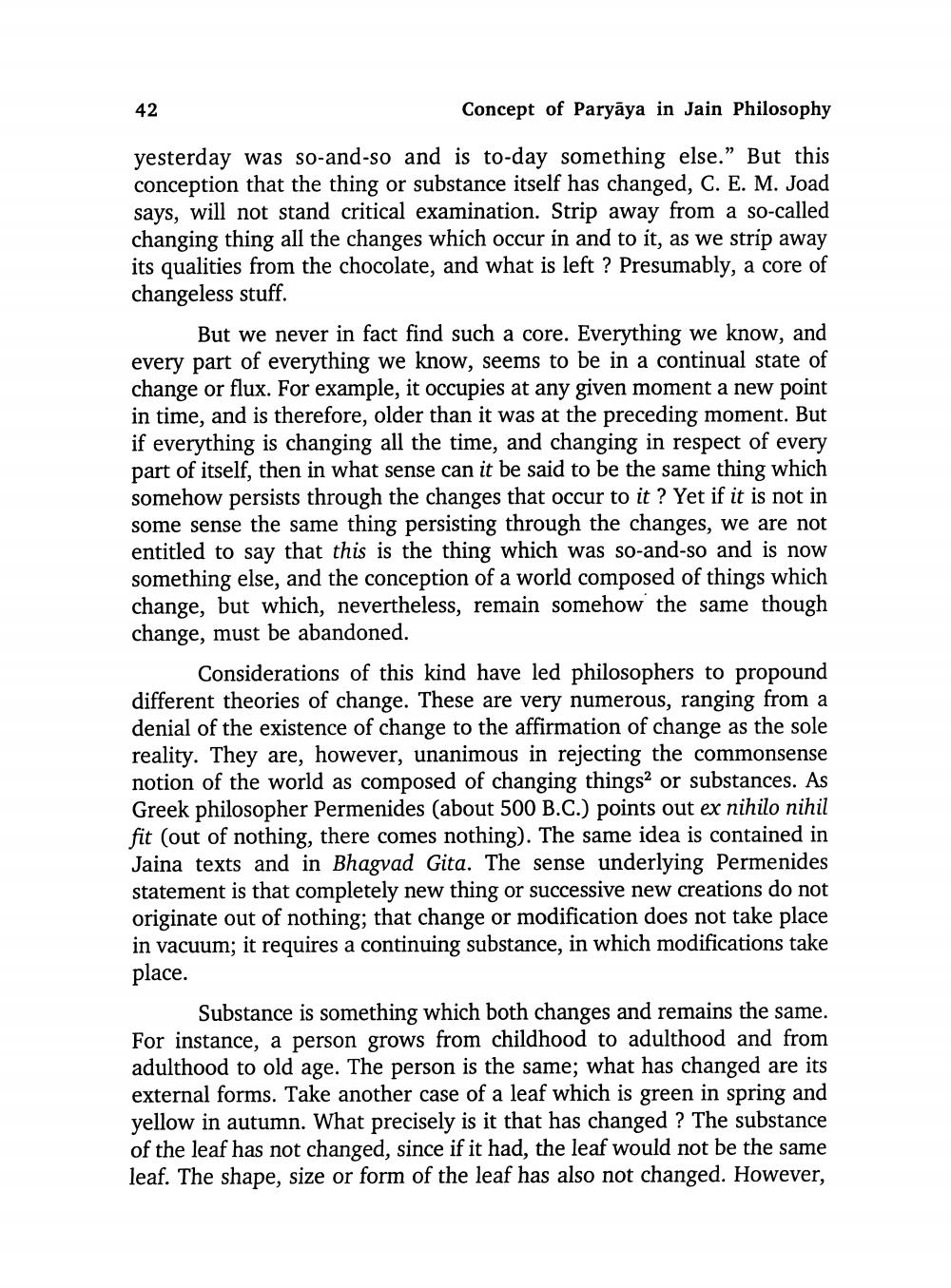________________ 4 22 Concept of Paryaya in Jain Philosophy yesterday was so-and-so and is to-day something else." But this conception that the thing or substance itself has changed, C. E. M. Joad says, will not stand critical examination. Strip away from a so-called changing thing all the changes which occur in and to it, as we strip away its qualities from the chocolate, and what is left ? Presumably, a core of changeless stuff. But we never in fact find such a core. Everything we know, and every part of everything we know, seems to be in a continual state of change or flux. For example, it occupies at any given moment a new point in time, and is therefore, older than it was at the preceding moment. But if everything is changing all the time, and changing in respect of every part of itself, then in what sense can it be said to be the same thing which somehow persists through the changes that occur to it? Yet if it is not in some sense the same thing persisting through the changes, we are not entitled to say that this is the thing which was so-and-so and is now something else, and the conception of a world composed of things which change, but which, nevertheless, remain somehow the same though change, must be abandoned. Considerations of this kind have led philosophers to propound different theories of change. These are very numerous, ranging from a denial of the existence of change to the affirmation of change as the sole reality. They are, however, unanimous in rejecting the commonsense notion of the world as composed of changing things? or substances. As Greek philosopher Permenides (about 500 B.C.) points out ex nihilo nihil fit (out of nothing, there comes nothing). The same idea is contained in Jaina texts and in Bhagvad Gita. The sense underlying Permenides statement is that completely new thing or successive new creations do not originate out of nothing; that change or modification does not take place in vacuum; it requires a continuing substance, in which modifications take place. Substance is something which both changes and remains the same. For instance, a person grows from childhood to adulthood and from adulthood to old age. The person is the same; what has changed are its external forms. Take another case of a leaf which is green in spring and yellow in autumn. What precisely is it that has changed ? The substance of the leaf has not changed, since if it had, the leaf would not be the same leaf. The shape, size or form of the leaf has also not changed. However,




